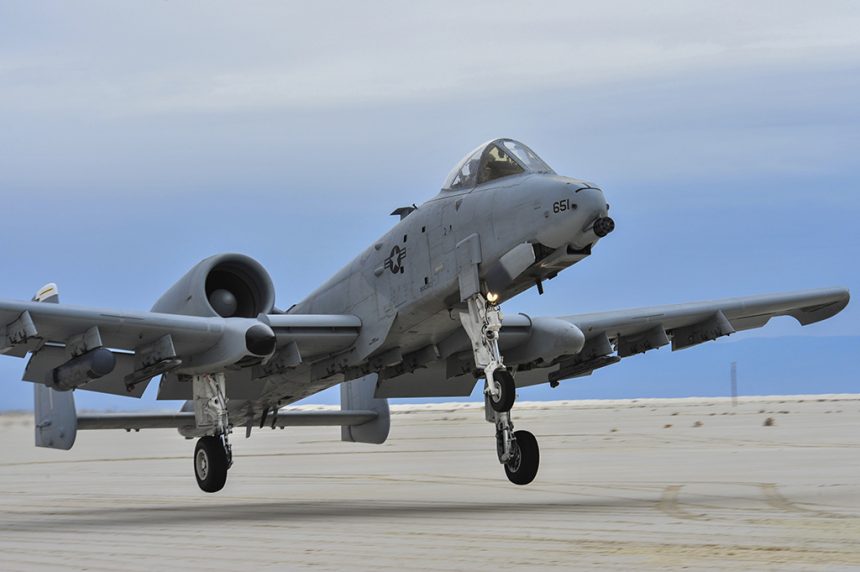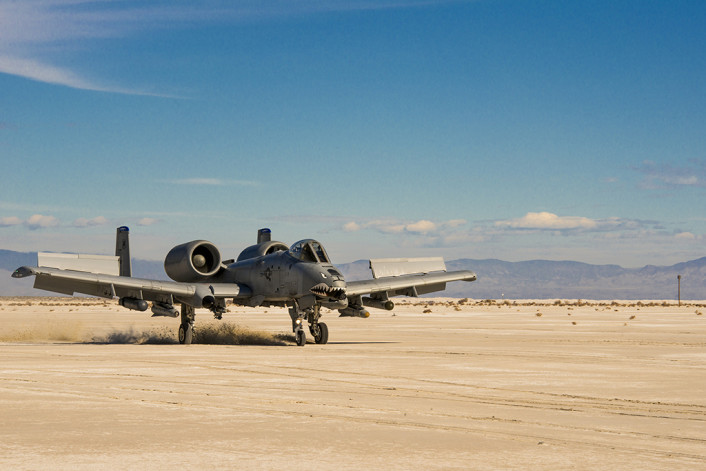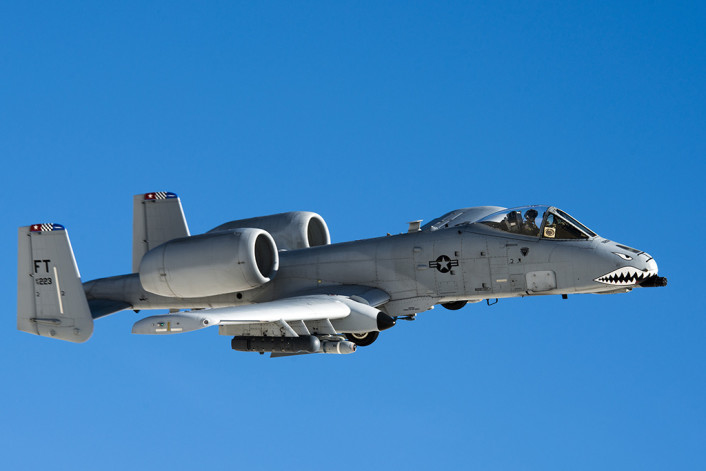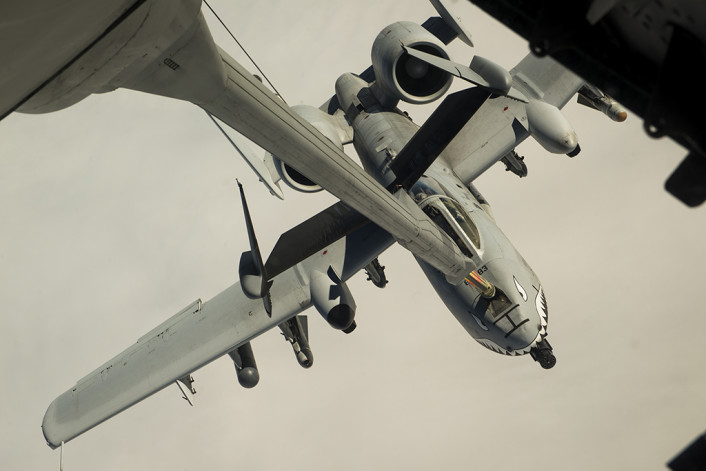A-10s rock White Sands Missile Range
On Dec. 3 and 4, A-10 Thunderbolts belonging to the 354th Fighter Squadron, from Davis-Monthan Air Force Base, Arizona, and the 74th Fighter Squadron, from Moody AFB, Georgia, conducted night and day unimproved surface landing training on a dry lake bed.
The training activities were supported by 23rd Special Tactics Squadron, from Hurlburt Field, Florida, who provided air traffic control at the landing strip located inside a simulated assault zone “similar to what would be seen in a deployed environment.”
This kind of activity is useful to validate procedure used when operations occur from within a denied territory, where there is no established landing zone under friendly control.
During the training, soft spots on the designated landing strip interrupted the departure of the first Warthog (the nickname of the Thunderbolt) causing the mission to change: subsequent aircraft practiced low approaches without conventional landing aids and instruments including night ones using NVGs (Night Vision Goggles).
To be replaced by the F-35 in the following years, the A-10 is currently supporting Operation Inherent Resolve against ISIS targets in Iraq.
Image credit: U.S. Air Force



















